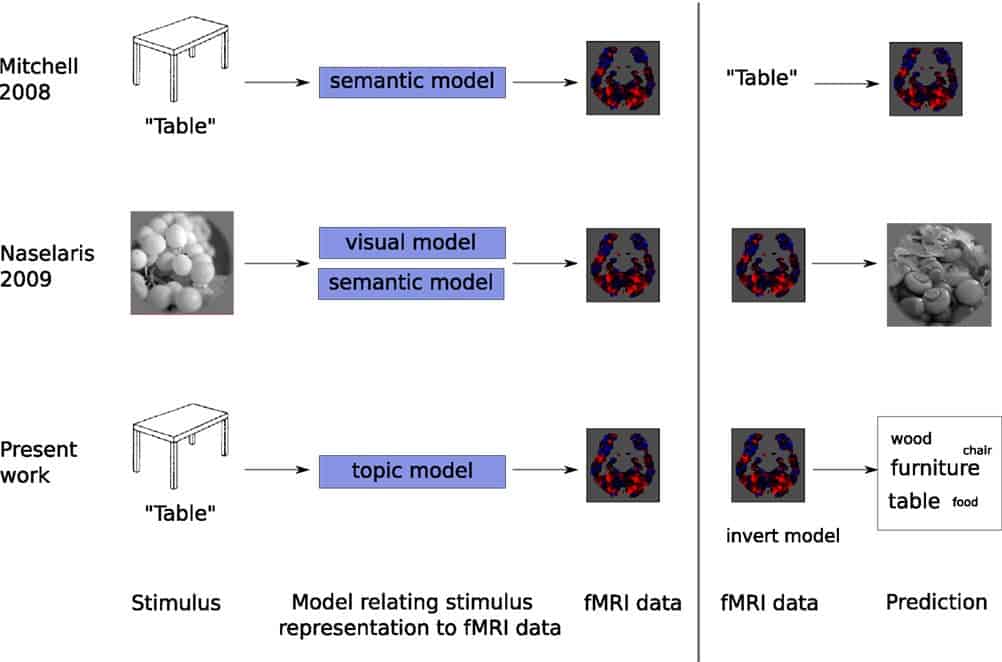Researchers from Princeton University recently published a study in which they show how they’ve been able to use functional magnetic resonance imaging and a computer program that condensed 3,500 Wikipedia articles to associate words to particular brain activity patterns. Basically, they were able to read thoughts.
To reach this remarkable correlation, researchers first did some fMRI scans while participants were asked to think of a given word and then visualize it for at least three seconds. This way, they were able to identify regions of the brain which turned active when the subject was thinking about a certain word, like “carrot” or “house”. Repeating this with various subjects, they were able to map a brain pattern that corresponds to a certain family of words or topic. For instance, thoughts about the idea of “furniture” shared similar patterns with words like “table,” “desk” and “chair.”

Extrapolating from this data, neuroscientists were able to read fMRI scans which allowed them to tell what topic a person was thinking about, without the researchers having any idea beforehand. Going back to the previous example, if the fMRI scan showed a brain activity corresponding to “chair”, scientists could assert that the subject was thinking about furniture.
“Whatever subject matter is on someone’s mind — not just topics or concepts, but also emotions, plans or socially oriented thoughts — is ultimately reflected in the pattern of activity across all areas of his or her brain,” said the team’s senior researcher, Matthew Botvinick, an associate professor in Princeton’s Department of Psychology and in the Princeton Neuroscience Institute.
The researchers picked up their work based on a previous 2008 word-association study, in which participants were shown a picture and a word of five objects in 12 categories.
Neural activity was recorded using fMRIs, but the topic range wasn’t broad enough so they used 3,500 Wikipedia articles about objects — like an airplane, heroin, birds and manual transmission – which were inputted in a software that returned 40 topics to which these things could relate — i.e. aviation, drugs, animals or machinery.
Scientists arranged the fMRIs and were ultimately able to tell the general idea inside a subjects head. Particular thoughts have been next to impossible to pick up, Princeton scientists explain, however the progress made thus far can be considered remarkable without a doubt. Eventually, scientists hope that they’ll be able to translate brain activity patterns into words which could actually accurately describe one’s train of thought.
Applications would be numerous for this SciFi concept. People of neural disabilities which renders them unable to communicate might benefit enormously from something like this, as well as, of course, intelligence agencies. Who wouldn’t love a mind reading device?






